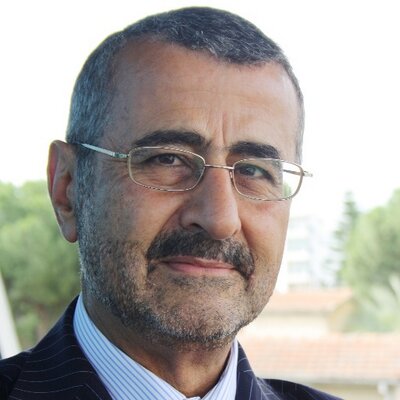Τhe EuroAsia Interconnector and Cyprus’ 2030 Energy Plan
Cyprus issued its draft updated National Energy and Climate Plan, 2021-2030, (NECP) for public consultation on July 21 and to the European Commission (EC) on 27 July. This is crucial to determining the pace and level of transition to clean energy between now and 2030, with far-reaching implications on future emissions and energy prices.
Central to this is a commitment to reduce emissions further, from the current target of -24%, to -32% in comparison to 2005 levels, by 2030. But this is well below EU’s target of a 55% reduction in comparison to 1990 levels and will leave Cyprus continuously exposed to high emission allowance costs all the way to 2030, even if, eventually, natural gas replaces oil in power generation.
All other targets in the updated NECP remain unclear. It refers to making an “appropriate contribution to [EC’s] mandatory target of at least 42.5% of renewable energy sources (RES) in EU’s gross final consumption by 2030,” and “an appropriate contribution to [EC’s] mandatory 11.7% energy efficiency improvement target at EU level by 2030.” But the NECP does not state what is meant by “appropriate.”
It is highly concerning that the NECP does not make a clear commitment on the level of RES in Cyprus’ energy mix by 2030, including in transport. Leaving such targets open puts future planning into question. I hope these will become clearer during the review period, and before the NECP is finalised by June 30, 2024.
Increasing the uptake of RES, particularly in power generation, requires modernisation of the grid, installation of battery storage and the EuroAsia Interconnector (EAI).
The NECP refers to electricity storage, but the target for battery storage, 50MW by 2030, is woefully low. It also includes a commitment for “investments in transmission system projects in the decade 2023-2032 with a total estimated budget of €231million.”
It strongly supports implementation of EAI and makes extensive references to it, stating that it “can have a drastic effect on the Cypriot energy prospects” and that “Cyprus is actively promoting…[the] EuroAsia Interconnector.” It states that the “EuroAsia Interconnector is a project aimed at ending the electrical isolation of Cyprus… The project is in a mature phase and has made significant progress. Cooperation between Greece, Israel and Cyprus will achieve the electricity interconnection target of at least 15% for 2030.” These unreserved commitments belie the recent press-questioning of the need for and viability of the project. It is impossible to see how Cyprus can deliver its updated NECP commitments and meet European climate targets without implementation of the EAI project.
EuroAsia Interconnector
The updated NECP correctly states that “the increased penetration of decentralised RES units, mainly PV systems, requires the development of electricity storage systems for the purposes of reducing electricity cut-outs and electricity system stability, bearing in mind that Cyprus remains unconnected to the electricity grids of neighbouring countries until 2029. By then, the electricity interconnection between Cyprus and the electricity system of Israel and Crete is expected to be completed with the EuroAsia Interconnector project, which will also help to reduce the electricity cut-offs from RES, which become necessary during periods of low electricity demand and high RES generation.” That’s exactly what EAI has been designed for.
Electricity interconnection is widespread throughout Europe and has led to the more efficient use of electric power, increased uptake of RES, helped deal with RES intermittency, increased energy system flexibility and stability, reduction in standby conventional power generation as back-up to RES, and energy security –benefits that battery storage alone cannot deliver. It also facilitates electricity trading and exports, especially RES electricity.
The total cost of the EAI project is estimated to be €1.925 billion. It has already secured €758 million funding from the EC and Cyprus’ Recovery and Resilience Fund. In addition, Greece’s Transmission System Operator (ADMHE) has joined the project with a 25% stake, with an appropriate funding contribution.
The Cypriot and Greek regulators, RAEK (CERA) and RAE, have already approved the project’s budget and return on investment. They have also approved EAI’s charging tariffs.
The remainder of the funds will be secured through loans from a leading European-government export-credit finance organisation together with international financing institutions, with whom EAI is in advanced discussions to conclude a syndicated loan.
Funding is also being sought from the European Investment Bank (EIB), requiring the support of Cyprus government. Other than this support, EAI does not require funding or participation of the state. Contrary to recent publicity, EIB has not yet made a formal final decision, but commissioned an evaluation study of the project.
On July 19, Nexans, a world leader in the design and manufacturing of cable systems and services, was awarded the major EAI contract valued at €1.43billion -a major milestone.
EAI evaluation
This was carried out recently by an independent company on behalf of EIB. According to the project promoter, the study confirmed the economic viability of the project as well as the significant socio-economic benefits resulting from its implementation to consumers, estimated to amount to €300 million annually, contributing to significantly reducing electricity bills.
As part of the evaluation process, EIB’s procedures include comparison with other potential options. In this case, the independent company proposed the mass installation of batteries throughout Cyprus with a total capacity of 1350MW, lasting four hours. Leaving aside the fact that Cyprus’ NECP envisages only limited installation of batteries – 50MW by 2030 – this is like ‘comparing apples to oranges’. The battery option provides storage short term that can be used during the night when the sun is not shining. It does not provide a long-term solution, for example over long periods between April and November when wind speeds and wind energy are low, or during cloudy periods, and, as indicated earlier, it is not a substitute for the Interconnector.
Without interconnection Cyprus will not be able to achieve a high level of RES uptake in line with EU plans. As a result, heavy reliance on fossil fuels, be it oil or natural gas, will continue for a long time at high cost, particularly as a result of having to continue paying heavily for emission allowances.
Europe is fully interconnected, Greece is interconnected with all its neighbours and it is seeing the benefits through high levels of RES adoption. Greece is also interconnecting the islands with the mainland, including Crete, with EIB support. North African countries are interconnecting with Europe, with EBRD and EIB support. Unfortunately, and for whatever reason, Cyprus, having secured the highest funding from the EC, is in danger of talking itself out of it. I hope not.
Dr Charles Ellinas is Senior Fellow, Global Energy Center, Atlantic Council









Click here to change your cookie preferences